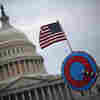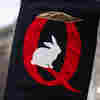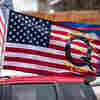QAnon Revives America’s ‘Satanic Panic’
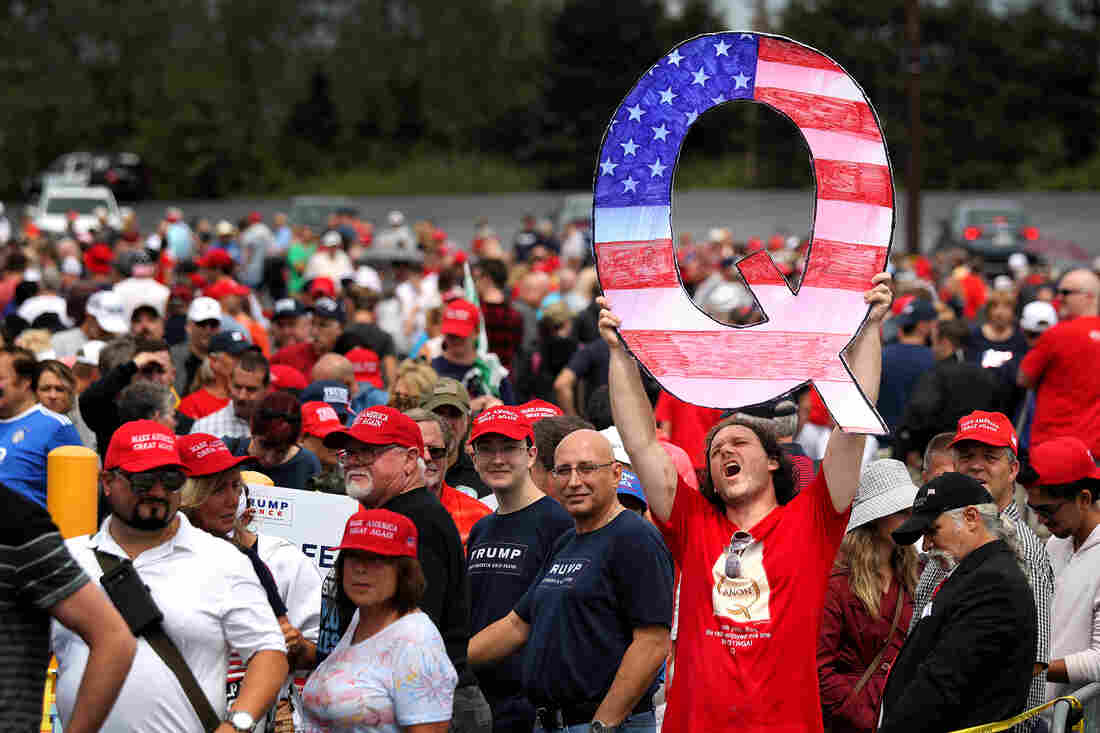
David Reinert holds up a large “Q” sign that represents QAnon while waiting in line to see then-President Donald Trump at his rally in Wilkes-Barre, Pa., on Aug. 2, 2018. Rick Loomis/Getty Images hide caption
toggle caption
Rick Loomis/Getty Images

David Reinert holds up a large “Q” sign that represents QAnon while waiting in line to see then-President Donald Trump at his rally in Wilkes-Barre, Pa., on Aug. 2, 2018.
Rick Loomis/Getty Images
The first time sociologist Mary de Young heard about QAnon, she thought: “Here we go again.”
De Young spent her career studying moral panics — specifically, what became known as the “Satanic Panic” of the 1980s, when false accusations of the abuse of children in satanic rituals spread across the United States.
Decades later, echoes of that same fear had emerged in QAnon. The seemingly novel conspiracy theory has grown in far-right political circles since November 2017. Adherents of QAnon believe that a shadowy cabal kidnaps children, tortures them and uses their blood in satanic rituals. The alleged perpetrators in the QAnon conspiracy theory are Democratic politicians — not preschool teachers, as had been the case in the 1980s — but the accusations are eerily similar.
“Every moral panic has to have a folk devil,” says de Young, the author of The Day Care Ritual Abuse Moral Panic. “It has to have a person — or more likely a group of people, whether real individuals or fantasized individuals — who are the devils in the middle of all of this.”
One of the earliest bellwethers of the Satanic Panic came in 1980 with the publication of Michelle Remembers, a memoir co-written by Canadian psychologist Lawrence Pazder and his patient Michelle Smith. The book graphically details abuse that Smith claimed to have suffered as a child at the hands of a satanic cult — abuse that she had allegedly forgotten but eventually recovered through her work with Pazder.
The book was a bestseller, and Pazder became the leading academic voice warning about the dangers of “ritual abuse.” He also began to consult with prosecutors in criminal trials, including the case that would spread fears of satanic abuse even farther around the country: the McMartin Pre-School trial.
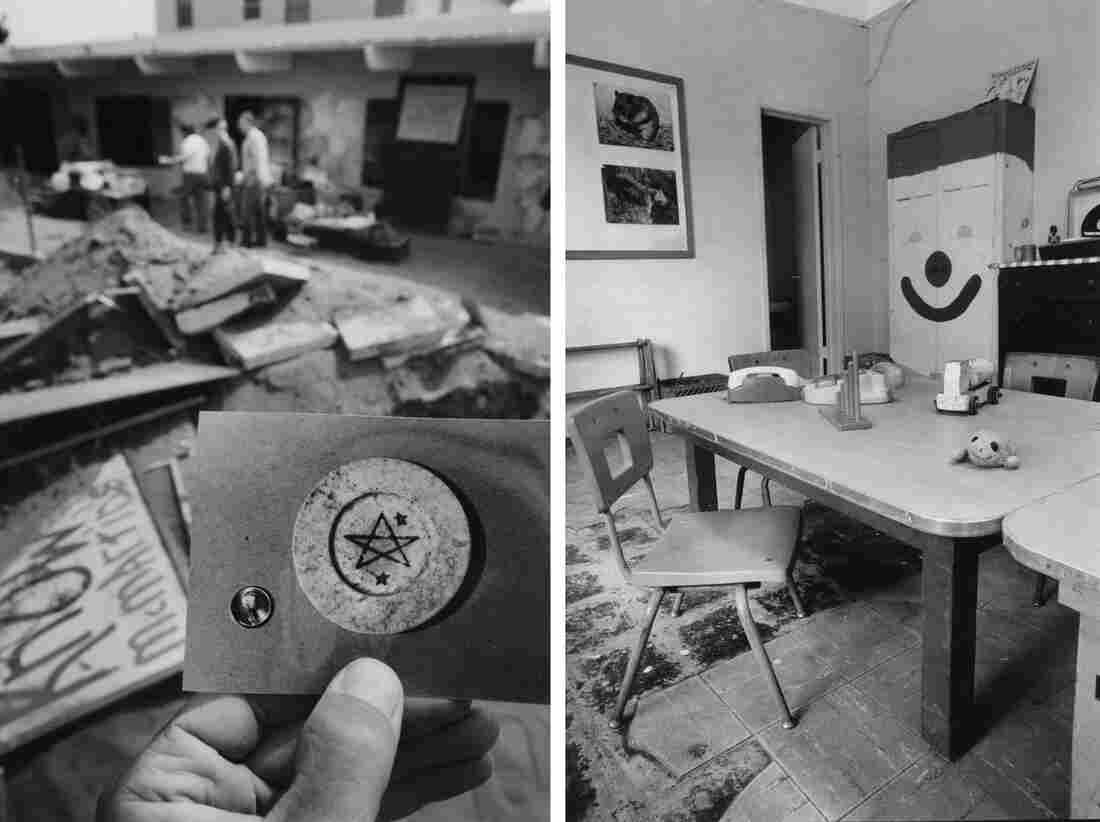
Left: May 27, 1990 — A plate bearing a pentagram that was found at the McMartin Pre-School. Parents said it could be part of a satanic ritual. Right: April 19, 1989 — Room B at the McMartin Pre-School in Manhattan Beach, Calif. Patrick Downs/Los Angeles Times via Getty Images; Lacy Atkins/Los Angeles Times via Getty Images hide caption
toggle caption
Patrick Downs/Los Angeles Times via Getty Images; Lacy Atkins/Los Angeles Times via Getty Images
“I thought it was the case of our times,” says Danny Davis, attorney for defendant Ray Buckey. Buckey, a teacher at Virginia McMartin’s preschool in Manhattan Beach, Calif., was accused of abusing one of his students in 1983. By the following spring, the accusations had grown to include hundreds of children, and rumors swirled that the students had been abused in satanic rituals at cemeteries and in tunnels underneath the school.
“Whatever it was that happened was social contagion, and it’s that simple,” says Davis.
Davis decided to study historical examples of witch hunts and allegations of satanic behavior in order to prepare his defense. “I saw clearly there’s a process on a timeline that starts with some sort of scandal or change in the society that develops a very forceful, agreed-upon accusation against a target or scapegoat. And the scapegoat is then quickly destroyed,” he says.
The McMartin Pre-School case became one of the longest and most expensive criminal cases ever tried in the United States. It ended when Buckey was acquitted of dozens of charges in 1990.
Attempts to find tunnels underneath the preschool failed, and since the trials, several of the students who accused Buckey of abuse have admitted their stories were fabricated.
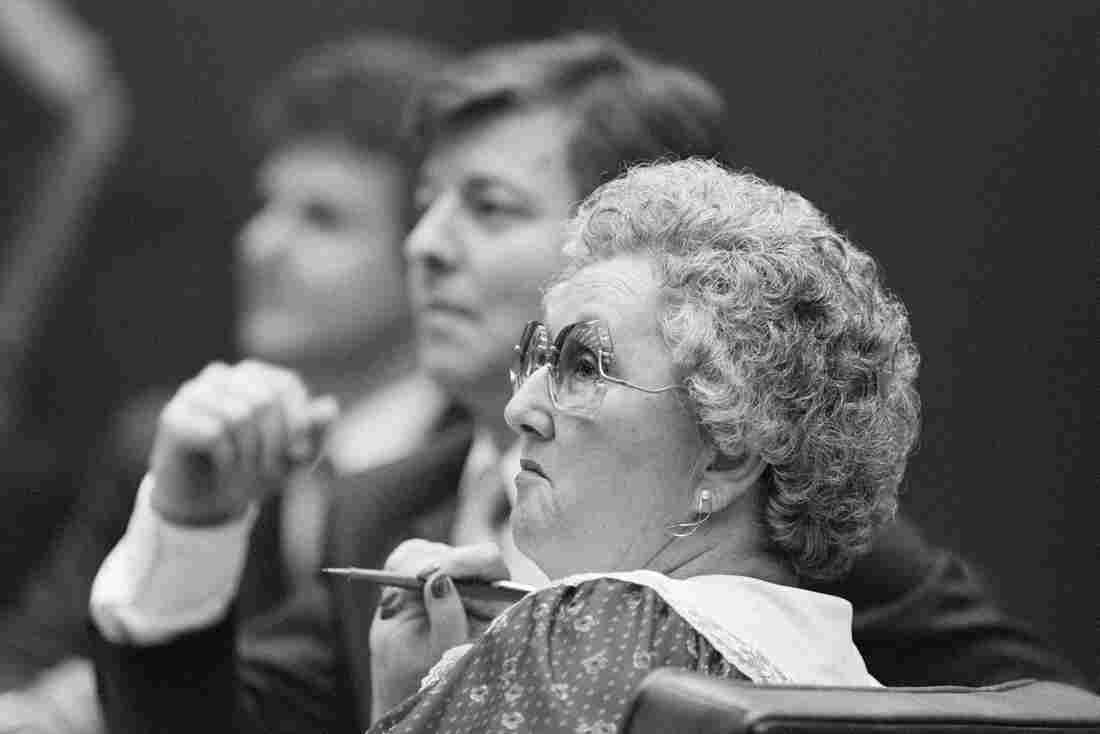
Peggy McMartin Buckey and her son, Ray Buckey, listen to the opening statements in their trial for allegedly sexually abusing children at the preschool they operated. They were eventually acquitted years later. Bettmann/contributor/Getty Images hide caption
toggle caption
Bettmann/contributor/Getty Images
But the lack of physical evidence in cases like the McMartin Pre-School trial didn’t stop allegations of satanic ritual abuse from spreading during the 1980s. National broadcasts like 20/20 ran long specials featuring children claiming to have been abused by satanists. Academic conferences discussed recovered memory and satanic abuse, and psychologists like Pazder began to train law enforcement to recognize warning signs in their communities.
“This was a snail mail approach to spreading a moral panic,” says de Young.
By contrast, the early rise of QAnon was entirely digital. In November 2017, an anonymous user named “Q Clearance Patriot” posted for the first time on the message board 4chan. An NBC News investigation later found that three other users initially promoted and spread those early posts, beginning the transformation of QAnon from an obscure online forum to an influential conspiracy theory taking root in far-right American politics.
As QAnon spread, so did the belief among its adherents that a Satan-worshipping cabal of elite politicians was ritually abusing children — and, specifically, draining them of a chemical compound called adrenochrome, which they believe is then ingested as a drug.
“These are the same kind of tropes that crop up again and again and again,” says Eleanor Janega, a historian at the London School of Economics who has studied moral and religious panics over satanism throughout history. “This idea that there’s this kind of shadowy realm of the people who control the world secretly and they’re all getting together to plot out and really delight in this kind of torture and sacrifice.”
There are, however, clear differences between QAnon and the Satanic Panic of the ’80s, the biggest being the political nature of QAnon conspiracy theories, which target Democratic politicians and hold up former President Donald Trump as a savior.
But Lawrence Wright, a Pulitzer Prize-winning author who wrote a book about the Satanic Panic, says there are still commonalities between the believers in each movement — even putting fears of satanism aside.
“They see themselves as heroic,” says Wright. “And how can you be heroic in today’s world? Well, you protect the children — you protect the children against this cabal that is out to turn them into sex slaves. How could there be anything more important than that?”
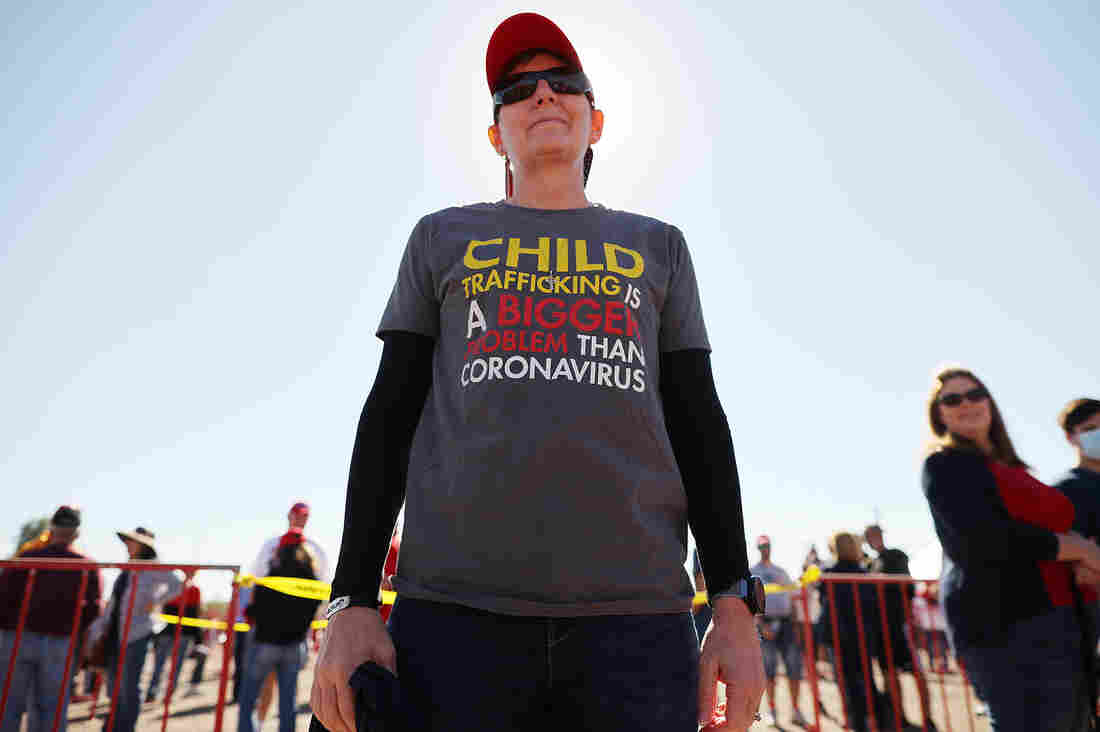
A woman wears a shirt promoting a QAnon conspiracy theory while waiting in line to attend a campaign rally with then-President Donald Trump on Oct. 28, 2020, in Goodyear, Arizona. Chip Somodevilla/Getty Images hide caption
toggle caption
Chip Somodevilla/Getty Images

A woman wears a shirt promoting a QAnon conspiracy theory while waiting in line to attend a campaign rally with then-President Donald Trump on Oct. 28, 2020, in Goodyear, Arizona.
Chip Somodevilla/Getty Images
It’s unclear how much support QAnon will continue to receive with Trump out of the White House — polling is mixed about the degree of favorability the conspiracy theory enjoys among the American electorate. But de Young believes that moral panics eventually fizzle as hard evidence of their claims fails to materialize.
“The best available weapon we have is to counter the information with facts, is to keep pressing for more information, because it’s in the area of facts that moral panics tend to collapse,” de Young says. “They just get ridiculous, except for maybe a very small number of true believers who can tolerate an enormous amount of dissonance.”
Noah Caldwell, Mia Venkat and Patrick Jarenwattananon produced and edited the audio story. Noah Caldwell adapted it for web.

